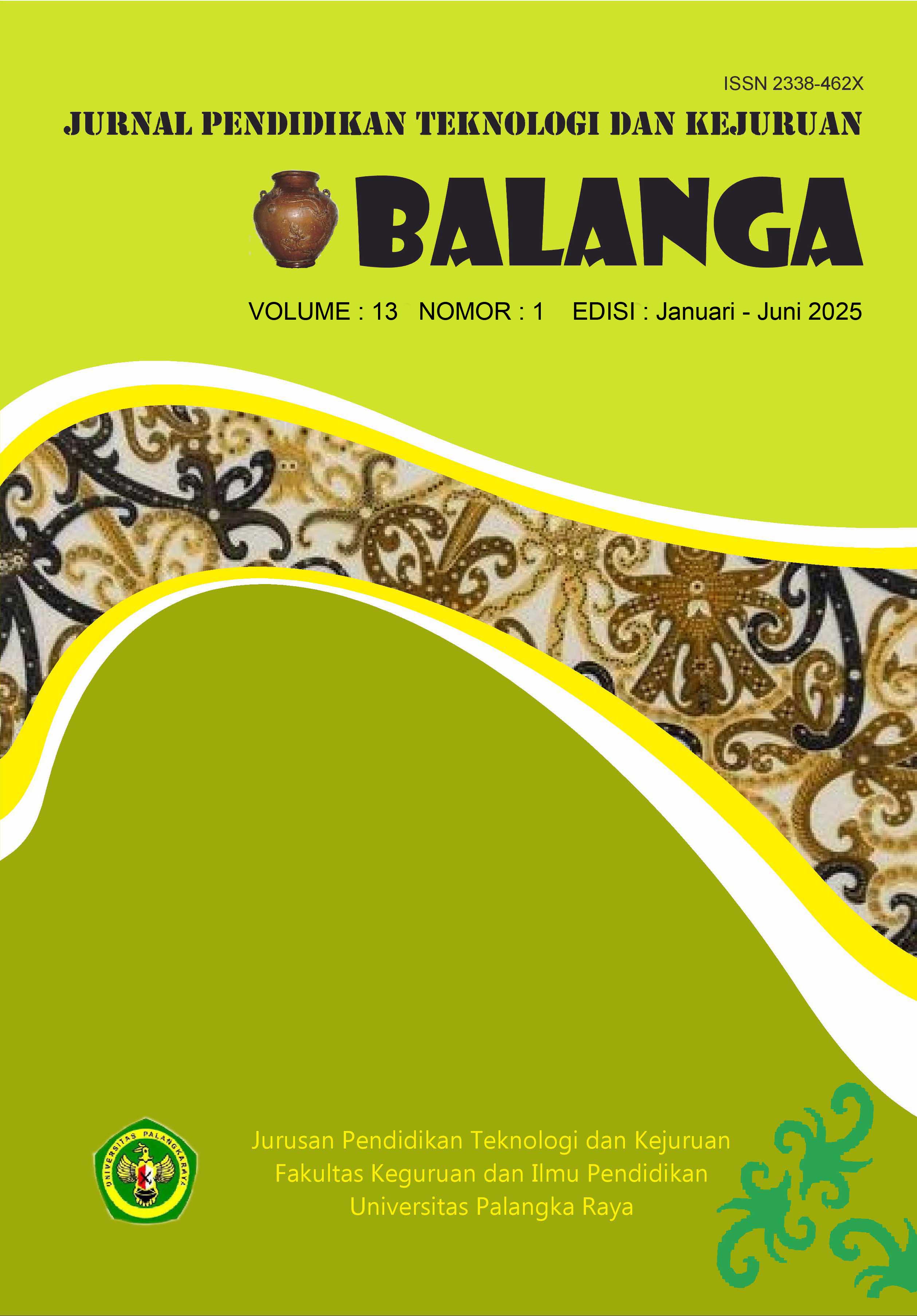DEVELOPMENT OF A DATA LOGGER-BASED WATER LEVEL MONITORING SYSTEM FOR PEATLANDS
DOI:
https://doi.org/10.37304/balanga.v13i1.18390Keywords:
Water Level Depth, Energy Monitoring System, Peatlands, Voltage Disruption, Energy EfficiencyAbstract
This study investigates the dynamics of water level (TMA), electrical current, power, and battery voltage in a data loggerbased monitoring system designed for peatlands. Data collected from October 30 to December 4, 2024, highlight significant fluctuations influenced by environmental factors, load surges, and voltage disruptions. Scenario simulations, including changes in rainfall, sudden load increases, and voltage system disturbances, were performed to evaluate the system's operational efficiency and stability. The findings indicate that TMA is highly influenced by hydrological conditions, where a 50% reduction in rainfall significantly decreases TMA, impacting the stability of current and power. A 50% load surge drives the current and power close to the system's maximum capacity, while voltage disruptions lead to a 20% increase in current and a 20% reduction in power, revealing system imbalances. Energy efficiency remains stable under normal conditions (0.0022) but drops significantly during disruptions. The study underscores the need for integrating protective technologies, such as Automatic Voltage Regulators (AVR), Overcurrent Protection, and balanced load management, to mitigate risks and maintain system stability. Additionally, improved water management in peatlands contributes to stabilizing TMA and reducing environmental impacts on electrical parameters. This research highlights the importance of a holistic approach, combining technology, hydrological management, and data-driven simulations, for sustainable operations. The findings offer practical recommendations for system enhancement, risk mitigation, and the development of future energy monitoring tools. Opportunities for renewable energy integration are also explored to ensure long-term operational efficiency and environmental sustainability.
Downloads
Downloads
Published
Issue
Section
License
Copyright (c) 2025 BALANGA: Jurnal Pendidikan Teknologi dan Kejuruan

This work is licensed under a Creative Commons Attribution-NonCommercial 4.0 International License.



























